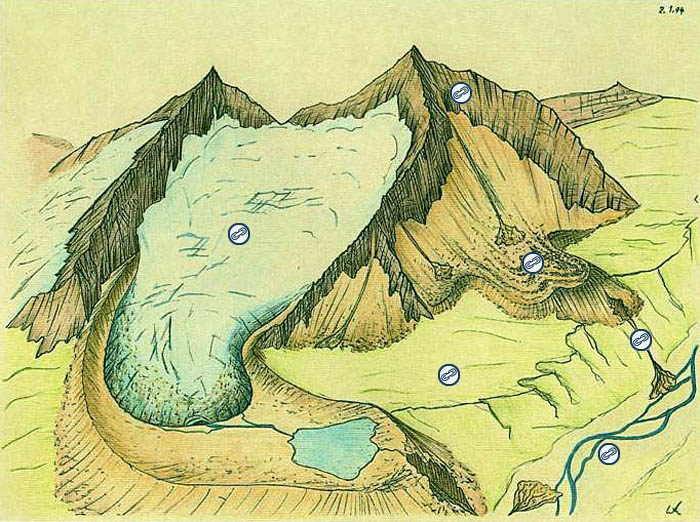 |
|
|
|
|
|
| The present lesson will provide a brief outline of approaches used and attempts made to quantitatively model the chain of mass exchange processes. It will also give an overview of the main soil types in mountainous areas and the factors influencing the evolution of soils. Mass transportation in cold mountain
areas takes place at a rather steady rate in the form of small-scale rock
falls, snow avalanches, glacier movement, permafrost creep, solifluction
and river flow. Large-scale rock falls, landslides, floods and debris
flows, however, reflect more rarely occurring extreme events (Figure 1).
In the context of the present overview, the term "cold mountain area"
is applied to the periglacial and glacial belts of regions with a rugged
topography and considerable altitudinal extent. Within long time intervals
such as the Holocene or the Quaternary, even low-frequency/high-magnitude
events are part of a dynamic equilibrium and thereby represent a basic
risk for life, settlements and installations in cold mountain areas. The
main question is whether and, if yes, to what extent this historic situation
has changed already and may chang further in the future. |
|

|
| 1 - Scheme showing the process chain of debris production
by frost weathering, debris throughput ba glacier erosion/sedimentation and permafrost creep, and material evacuation by debris flow. |
|
|
29 August 2011 |
||
| |
||